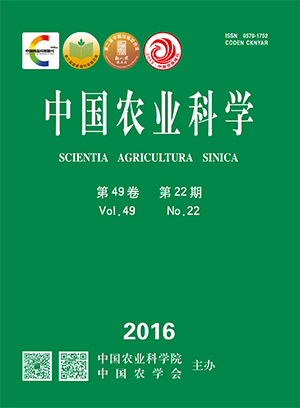-
Progresses in Research on Cloning and Functional Analysis of Key Genes Involving in Rice Grain Quality
- ZHANG Chang-quan, ZHAO Dong-sheng, LI Qian-feng, GU Ming-hong, LIU Qiao-quan
-
Scientia Agricultura Sinica. 2016, 49(22):
4267-4283.
doi:10.3864/j.issn.0578-1752.2016.22.002
-
 Abstract
(
960 )
Abstract
(
960 )
 HTML
(
18 )
HTML
(
18 )
 PDF (509KB)
(
3789
)
PDF (509KB)
(
3789
)
 Save
Save
-
References |
Related Articles |
Metrics
Rice (Oryza sativa L.) is one of the most important cereal crops in worldwide and also a major stable food in China, thus it is very important to breed novel rice cultivars with high yield as well as good grain quality. Rice grain quality is a complex trait, and usually means rice or rice products meeting the demand of end-users. Therefore, the concept of rice grain quality covers multiple features revealed by the physical and chemical characteristics, including milled rice ratio, grain shape, appearance, cooking time, aroma and its retention after cooking, eating palatability, and nutrition. In general, rice grain quality includes as milling quality, apparent quality, eating and cooking quality (ECQ), and nutritional value. The grain shape is not only the factors associated with yield but also crucial aspects of grain quality. In the past decade, there were rapid and great achievements in the cloning and functional analyses of the genes involving in rice grain qualities. For grain size and shape, numerous QTLs and genes have been cloned and characterized. These cloned genes could be divided into three groups based on the phenotypes of the mutants. The first group is associated with not only grain shape but also plant phenotype, such as D1, D2, D11, D61 and SMG1. The second group appears to specifically affect grain trait, including GS3, GL3.1, GW7, GW2, GW5, GS5, GS6, TGW6, GW8, BG2, GW6a and GS2, which are well valuable for improvement of grain yield and quality. The third group is called small and round seed, such as the SRS gene. Chalkiness is associated with both grain appearance and milling property, and only few such QTLs have been finely mapped and cloned, including Chalk5, cyPPDK, G1F1, OsRab5a, FLOURYENDOSPERM2, PDIL1-1 and SSG4. The starch comprises about 90% of the dry matter of rice endosperm, and thus the grain quality is greatly affected by starch composition and structure. Therefore, the starch biosynthesis plays a crucial role in the formation of rice quality, especially the eating and cooking quality. Recent studies had made deep understanding of the regulation network of starch biosynthesis related enzymes, and several transcriptional regulators had also been proven for involving in starch biosynthesis, such as Dull, OsEBP89, OsEBP5, OsRSR1 and OsbZIP58. For seed protein content, most of the genes for seed storage proteins have been well characterized, and some other genes, such as OsSar, OsRab5a, OsAPP6, RISBZ1, RPBF, OsVPS9A, OsGPA3 and GEF2 have also been identified associating with protein sorting and transporting. The aroma of cooked rice contributes to consumer sensory acceptance, and recent studies have confirmed that the BADH2 and OsP5CS genes are responsible for the synthesis of fragrance material 2-AP. As for the other nutritional factors, such as the contents of essential amino acid lysine, vitamins, anthocyanin and minerals, also many functional genes have been cloned or elucidated. Taken together, all of the above traits are known to be genetically controlled by multiple genes, and also interact with each other. In present review, the genetic networks involving in regulation of rice grain quality in the last decade were summarized and updated. It will give a better understanding of the genes that contribute to the overall grain quality as well as lay a foundation for development of new strategies for grain quality improvement with high yield in rice.









